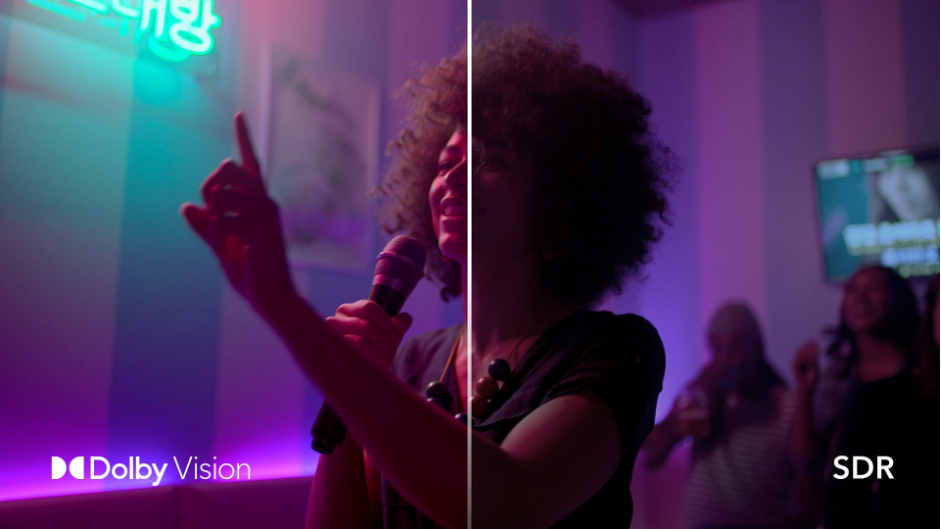AWS for M&E Blog
Tag: AWS Elemental Live
Part 2: 4K HDR VOD workflows using AWS Elemental MediaConvert and AWS Elemental Server
Part 1: Expanding the color gamut with HDR and AWS Elemental Part 2: HDR VOD workflows using AWS Elemental Server and AWS Elemental MediaConvert (this post) Part 3: Live and VOD-to-Live HDR workflows on AWS You have probably heard 4K and HDR many times, but exactly what do they mean for you and your customers? […]
Part 1: Expanding the color gamut with HDR and AWS Elemental
In this three part series, we discuss the current status of High Dynamic Range (HDR) video support across the AWS Elemental Media Services and appliances. Since our founding in 2006, our customers have expected our products to continue to produce the best quality video per bit using the latest codecs and formats. HDR is now […]
Getting started with AWS Elemental Live and Dolby Vision
In the relatively new, ever-changing arena of High Dynamic Range (HDR) technologies, there are quite a few options to consider when it comes to creating video content with rich, beautiful, pronounced pictures with both brighter and darker colors. These include HDR10, HDR10+, HLG, and Dolby Vision. This post focuses on the key benefits of Dolby […]
Live media workflows on AWS: To compress, or to not compress?
Introduction In a cloud migration journey, there are many decisions that need to be made. One of the primary decisions for live media workflows is how to bring content from on-premises to the cloud. For example, how to take an event that is being shot at a sporting arena to the cloud for processing, and […]
Part 2: Working with SMPTE ST 2022-6 on AWS Elemental Live appliances
This two-part blog post is a look at the Society of Motion Picture and Television Engineers (SMPTE) ST 2022-6 standard. The first post explores some of the reasons customers are transitioning from Serial Digital Interface (SDI) infrastructure to IP. It also looks at the trade-offs to consider when making the switch, and best practices using AWS […]
Part 1: Background and key benefits of SMPTE ST 2022-6 on AWS Elemental Live
This two-part blog is a look at the Society of Motion Picture and Television Engineers (SMPTE) ST 2022-6 standard. This first post explores some of the reasons customers are transitioning from Serial Digital Interface (SDI) infrastructure to IP. It also looks at the trade-offs to consider when making the switch, and best practices using AWS […]
AWS Elemental Live SRT outputs configuration and workflows
Introduction AWS Elemental Live version 2.21 introduced support for ingesting transport stream (TS) inputs using SRT. Now, version 2.22 supports delivering TS outputs using SRT. The SRT (Secure Reliable Transport) protocol is an open-source transport technology optimized for live audio/video streaming. SRT enables secure and reliable transport of content across unpredictable, noisy networks, such as […]
ITV moves delivery of simulcast channels into the cloud to accelerate innovation
With a wealth of programming accessible at the push of a button, the average consumer is viewing more content than ever, whether binge watching the latest BritBox series, keeping up with the local news, or catching up on their favourite program. Coupled with rising audience expectations for more reliable viewing experiences, this unprecedented demand for […]
Reducing the complexity of linear channel management with Veset Stratus
Authored by Igor Krol, CEO at Veset. The content and opinions in this post are those of the third-party author and AWS is not responsible for the content or accuracy of this post. Over the past couple of decades, the way that video content is consumed has changed dramatically. The rise of OTT […]
A deep dive into Output Locking in AWS Elemental Live
Introduction In order to deliver broadcast-grade resilience, it’s essential to have redundant contribution encoders so live event viewing won’t be affected even if one of the encoders fails. However, when you run multiple encoders for redundancy, the outputs from those encoders must be synchronized with frame-level accuracy. Otherwise, viewers experience discontinuity when the encoder is switched […]









